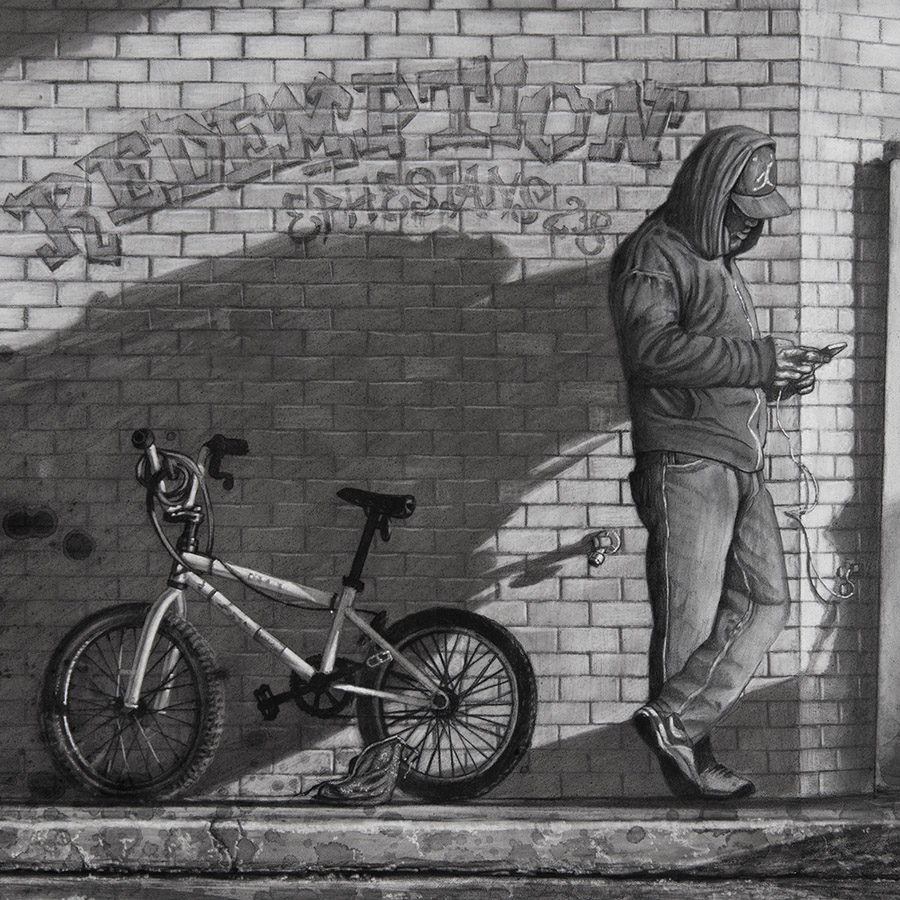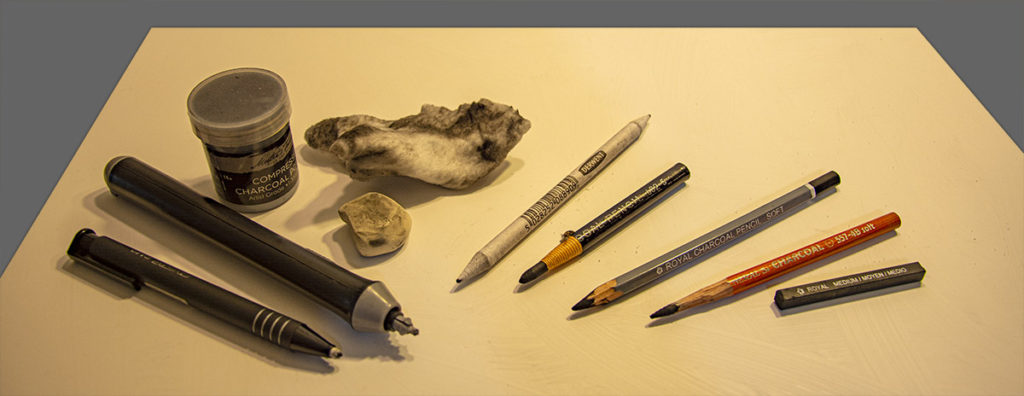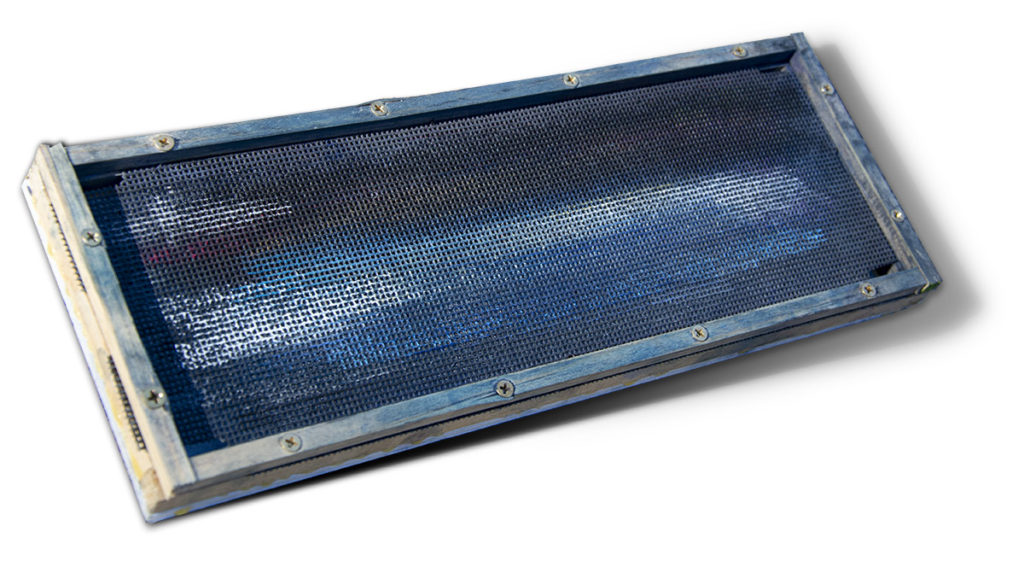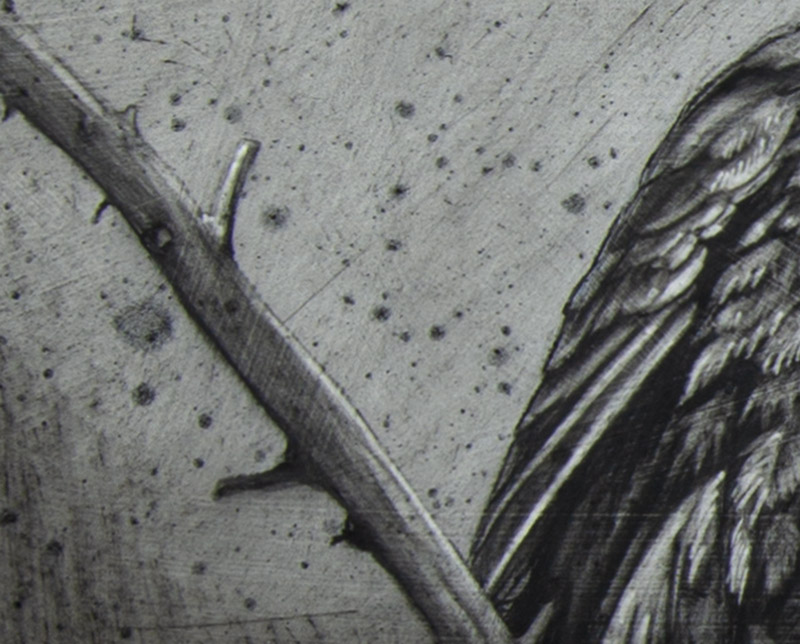

A couple of months I decided to make an excursion into the black and white world of charcoal. I had used vine charcoal in the past to rough out a drawing before I began painting, but had never done a serious drawing. In order to gather some information on the medium, my first stop on this excursion was Google. Gotta love Google. I discovered there were three basic forms of charcoal.
- Vine charcoal that I mentioned above which rubs off very easily and it’s great for rough sketches.
- Compressed charcoal, which is powdered charcoal compressed and held together with clay or gum; sticks and charcoal pencils are the final form of compressed charcoal.
- Powdered charcoal – applied dry with brush or mixed with thinner for washes.

I also “Googled” surfaces that work well for charcoal… this is where the plot thickens. I found a wide variety of “charcoal paper”, watercolor paper, Bristol illustration board and many other papers. But I could find none I really liked. Many had textures and patterns I was not fond of. I ended up buying several papers, Bristol Illustration board and paint panels to experiment with using the various forms of charcoal.

I started with charcoal sticks, charcoal pencils, and some powdered charcoal. After several weeks, I leaned towards the charcoal pencils as my go-to form of charcoal. But before using the pencils, I used charcoal powder in thinner washes for backgrounds, then built the drawing with the charcoal pencils, smearing, rubbing, etc. as I added layers of charcoal to build a final drawing. I sharpened the pencils with razor knife and a homemade sanding box that uses a drywall sanding screen that is used for sanding drywall. The dust falls into the box below the screen.
The first drawings I did were on Bristol Illustration board ( hot press, 4 ply). Not a bad support for charcoal, but it had a troublesome weakness. When erasing unwanted charcoal in areas such as lines used to rough in the drawing, it removed a coating that is apparently on the illustration board. This causes unwanted and misplaced dark spots in the drawing when smearing and blending the charcoal dust in those areas. This is especially noticeable in areas with soft, lightly blended tones, such as faces in portraits. In the first drawing it took much extra work to salvage the drawing in an attempt to hide the blemishes.
Next I tried working on paint panels. These were common paint panels made by Ampersand or Jack Richeson to create oil paintings. They have a gesso-like surface that has an orange peel texture. This surface allows for the removal of charcoal very nicely, getting back down to the original white surface where highlights are needed. The “orange-peel” provides some interesting texture in otherwise smooth areas as well. However, the downside is that the surface will not accept the soft, darker charcoal very well. The darker, softest charcoals simply will not apply to this surface as they should.

I created the drawing called “Ice” on this material, but still wanted a better support. Back to the art store.
After looking and reading about the qualities of many additional papers available, I noticed a very, very smooth “paper” which turned out to not actually be paper at all. It is called Yupo. Here is what the Yupo web site says about it:
“Yupo is the recyclable, waterproof, tree-free Synthetic Paper with attributes and properties that make it the perfect solution for a variety of marketing, design, packaging and labeling needs.”
Another blurb said Yupo was great with a variety of mediums, so I bought a large piece for around $9. I think the size of this large was about 32” x 40”, give or take.
When I got it back in the studio I grabbed some charcoal pencils and proceeded to do a little drawing/shading test… turned out to be the worse surface ever for charcoal. Since Yupo is 100 percent Polypropylene, it’s like trying to draw on plastic. Yupo was a “no-go”. To salvage the $9 sheet of “paper”, I thought I would brush a coat of Gesso on the Yupo, cut it into smaller sheets and use it for color studies in oil.
After being coated with one coat of Gesso, I thought in order to cover all the bases, I would try one more time with the charcoal on this new surface. What a difference one coat of Gesso made. In my opinion, Yupo synthetic paper with a coat of Gesso is ONE OF THE BEST surfaces for charcoal ever. The gesso gives it just the right amount of tooth to grab the charcoal, and it will erase back to the pure white gesso surface (especially when using an electric eraser). Another benefit I like is the Gesso leaves brush marks which help provide some interesting texture in the final charcoal drawing. I believe all future charcoal I work on will be on Yupo, with a coat of Gesso.

Light and Dark
One of the strengths of charcoal that I like is that is yields itself to high contrast between light and dark. Extreme light where there is no charcoal at all, and extreme dark where the softest, darkest charcoal is used. Extremes. Very much like the world we are presently living in. We have, on the one hand, beauty and pleasure and good things in this life; and on the other hand, we have cancer, pain and death. Extremes. I guess this is one reason I like the medium of charcoal. The extremes of light and dark can be very dramatic. This reminds me of our situation in this world and the life to come.
The older I get, the more I watch friends and loved ones pass from this life. We all have an appointment with death.
“And just as it is appointed for man to die once, and after that comes judgment”
Hebrews 9:27
This is why the Gospel is truly “good news”. The good news is that Christ came into a dark world to rescue us from the judgement to come.
“In Him was life, and the life was the Light of men. The Light shines in the darkness, and the darkness did not comprehend it.”
John 1:4-5
And then a few verses down it says “But as many as received Him, to them He gave the right to become children of God, even to those who believe in His name” John 1:12
A simple story of Light and dark. Freedom and bondage. Sin and righteousness. Death and life. Extremes.
“O death, where is your victory? O death, where is your sting?” The sting of death is sin, and the power of sin is the law. But thanks be to God, who gives us the victory through our Lord Jesus Christ.
1 Corinthians 15:55-57
The Light of Christ comes into the darkness of this world and if you believe and turn away from sin and self to Him, the Bible says that He saves us. Redeems us. He buys us back from the bondage of sin, of eternal death. He places us in His kingdom. The kingdom of “Light”.
Hope you have a blessed day!
“For God so loved the world, that He gave His only begotten Son, that whoever believes in Him shall not perish, but have eternal life”.
John 3:16


Hi, this is a comment.
To get started with moderating, editing, and deleting comments, please visit the Comments screen in the dashboard.
Commenter avatars come from Gravatar.